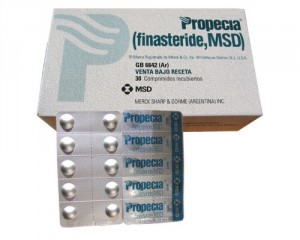What is Finasteride also known as Propecia
Finasteride, which is mainly sold under the name ” Propecia ” is the only scientifically proven FDA approved oral treatment against the effects of androgenic alopecia also known as Male Pattern baldness. Finasteride is a prescription drug that is not available over the counter in most countries. Only men are suitable for this treatment, the treatment is not allowed to women.
Propecia works by reducing the level of the 5-alpha-reductase Enzyme in the body which is a enzyme responsible for transforming testosterone into dihydrotestosterone. Dihydrotestosterone is a very potent androgen in the male pattern baldness process.
Hairmed doctors often prescribe propecia as a slower hair loss process will make enable a patient to enjoy the result of a hair transplant longer without having to have other operations to replace ongoing hair loss.
The medication is well documented and is now available in generic format in a lot of countries. If a patient is suffering from early hair loss, and wants to act on it, the finasteride option should be discussed with a physician.

